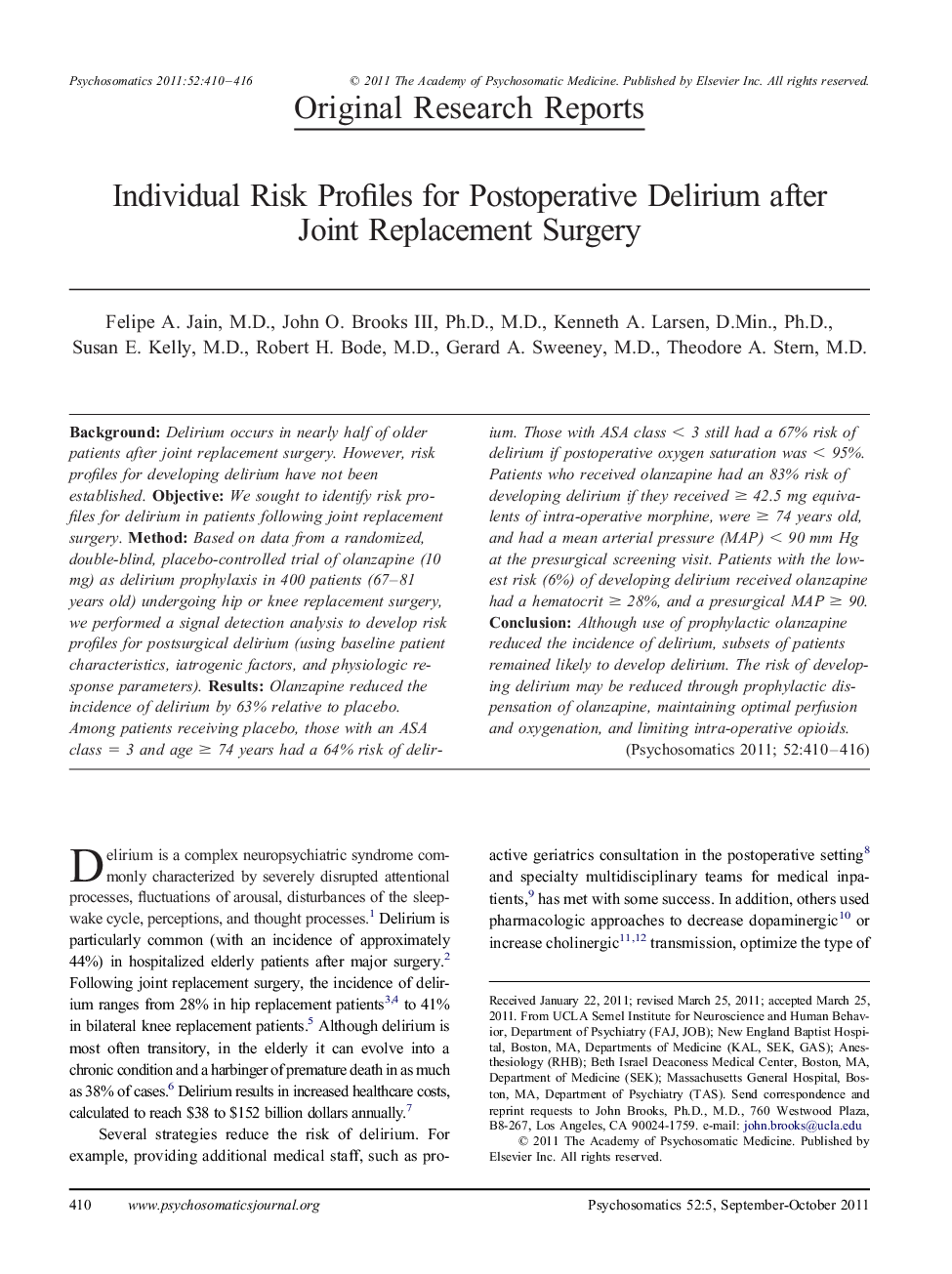| Article ID | Journal | Published Year | Pages | File Type |
|---|---|---|---|---|
| 339112 | Psychosomatics | 2011 | 7 Pages |
BackgroundDelirium occurs in nearly half of older patients after joint replacement surgery. However, risk profiles for developing delirium have not been established.ObjectiveWe sought to identify risk profiles for delirium in patients following joint replacement surgery.MethodBased on data from a randomized, double-blind, placebo-controlled trial of olanzapine (10 mg) as delirium prophylaxis in 400 patients (67–81 years old) undergoing hip or knee replacement surgery, we performed a signal detection analysis to develop risk profiles for postsurgical delirium (using baseline patient characteristics, iatrogenic factors, and physiologic response parameters).ResultsOlanzapine reduced the incidence of delirium by 63% relative to placebo. Among patients receiving placebo, those with an ASA class = 3 and age ≥ 74 years had a 64% risk of delirium. Those with ASA class < 3 still had a 67% risk of delirium if postoperative oxygen saturation was < 95%. Patients who received olanzapine had an 83% risk of developing delirium if they received ≥ 42.5 mg equivalents of intra-operative morphine, were ≥ 74 years old, and had a mean arterial pressure (MAP) < 90 mm Hg at the presurgical screening visit. Patients with the lowest risk (6%) of developing delirium received olanzapine had a hematocrit ≥ 28%, and a presurgical MAP ≥ 90.ConclusionAlthough use of prophylactic olanzapine reduced the incidence of delirium, subsets of patients remained likely to develop delirium. The risk of developing delirium may be reduced through prophylactic dispensation of olanzapine, maintaining optimal perfusion and oxygenation, and limiting intra-operative opioids.
